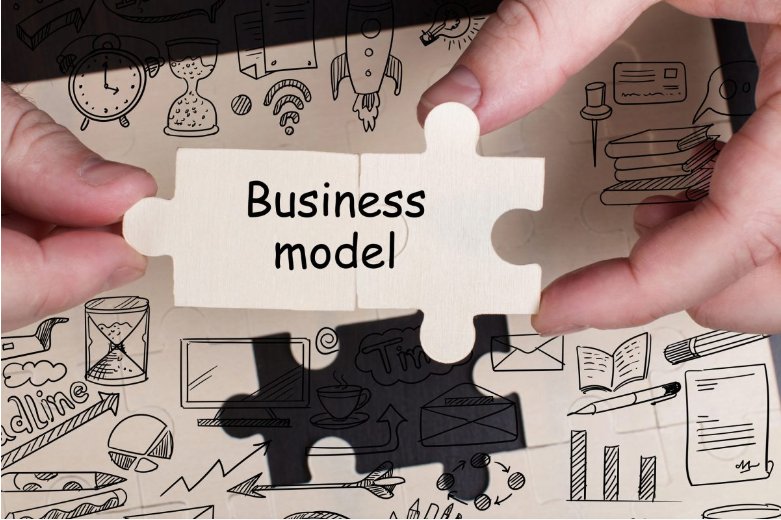How to Choose the Right Business Model for Long-Term Success
Choosing the right business model is one of the most critical decisions for any entrepreneur. Your business model determines how you generate revenue, deliver value, and scale your business over time. A poor choice can lead to financial struggles, while the right one can set you up for long-term success and profitability.
In this guide, we’ll explore different business models, factors to consider, and strategies to ensure your business thrives for years to come.
What is a Business Model?
A business model is the framework that defines how a company creates, delivers, and captures value. In simple terms, it’s how your business makes money.
An effective business model answers three key questions:
1️⃣ Who is your target audience?
2️⃣ What value do you provide?
3️⃣ How will you generate consistent revenue?
Successful companies like Amazon, Netflix, and Apple have optimized business models that align with their markets and ensure long-term sustainability.
Popular Business Models & Their Pros and Cons
Each business model has unique benefits and challenges. Here are the most common models and how they fit different industries.
1. Subscription-Based Model
📌 How It Works: Customers pay a recurring fee (monthly or annually) for continued access to a product or service.
💡 Examples: Netflix, Spotify, Amazon Prime, SaaS companies (Adobe, Salesforce)
✅ Pros:
✔ Predictable and stable revenue stream
✔ Builds customer loyalty and retention
✔ Easier to scale once established
⚠️ Cons:
❌ Requires consistent value delivery to avoid customer churn
❌ High customer acquisition costs upfront
🔹 Best For: SaaS businesses, content platforms, membership services, software products
2. E-Commerce Model
📌 How It Works: Sell physical or digital products online.
💡 Examples: Amazon, Shopify stores, Etsy, eBay
✅ Pros:
✔ Direct access to customers worldwide
✔ Can start with low initial investment (dropshipping, print-on-demand)
✔ Flexible pricing and product variety
⚠️ Cons:
❌ Highly competitive market
❌ Logistics and inventory management challenges
🔹 Best For: Retail businesses, handmade product sellers, digital goods, online courses
3. Marketplace Model
📌 How It Works: A platform connects buyers and sellers, taking a commission on transactions.
💡 Examples: Airbnb, Uber, Fiverr, Etsy
✅ Pros:
✔ No need to create your own products
✔ Scalability (more users = more value)
✔ Revenue grows without inventory costs
⚠️ Cons:
❌ Requires large user base to be profitable
❌ Balancing supply and demand can be difficult
🔹 Best For: Tech startups, sharing economy businesses, service platforms
4. Freemium Model (Free + Premium Upgrades)
📌 How It Works: Offers a basic service for free, with paid premium features.
💡 Examples: LinkedIn, Dropbox, Canva, Spotify (free vs. premium version)
✅ Pros:
✔ Attracts a large user base quickly
✔ Converts free users into paying customers over time
⚠️ Cons:
❌ Must provide enough free value while incentivizing upgrades
❌ Low conversion rates (only a small percentage of users pay)
🔹 Best For: Apps, software, content-driven businesses
5. Affiliate & Commission-Based Model
📌 How It Works: Earn a commission by promoting other companies’ products or services.
💡 Examples: Amazon Associates, influencers with brand partnerships, bloggers with affiliate links
✅ Pros:
✔ Low startup costs (no product creation required)
✔ Scalable without inventory or customer support
⚠️ Cons:
❌ Earnings depend on external commission rates
❌ Requires a large and engaged audience
🔹 Best For: Bloggers, content creators, influencers, digital marketers
How to Choose the Right Business Model
1. Identify Your Target Market
✔ Who are your ideal customers?
✔ What problems do they have?
✔ How do they prefer to pay for solutions?
For example, a subscription model works well if customers need ongoing value (Netflix, SaaS). If they prefer one-time purchases, an e-commerce model may be better.
2. Assess Your Strengths & Resources
✔ Do you have technical skills (good for SaaS, apps)?
✔ Can you create engaging content (good for freemium or affiliate marketing)?
✔ Do you have capital to invest upfront?
If you have limited funds, an affiliate business or dropshipping can be a low-cost starting point.
3. Evaluate Scalability & Profitability
✔ Can the business grow without huge costs?
✔ Does it allow for repeat customers and long-term revenue?
✔ Are there successful competitors using this model?
Subscription-based models tend to be highly scalable due to recurring revenue, while marketplaces scale well but require high user engagement.
4. Test Before Fully Committing
✔ Launch a Minimum Viable Product (MVP) to validate demand.
✔ Gather customer feedback and adjust accordingly.
✔ Be flexible—pivot if necessary.
For example, Instagram started as a check-in app (Burbn) before pivoting to a photo-sharing platform based on user feedback.
Mistakes to Avoid When Choosing a Business Model
🚫 Ignoring Market Demand – Just because a model worked for another company doesn’t mean it will work for yours. Validate your market first.
🚫 Overcomplicating the Model – Keep it simple. A business model should be easy to understand, execute, and scale.
🚫 Neglecting Customer Retention – Acquiring customers is expensive. Choose a model encourages repeat business (e.g., subscriptions, upsells).
🚫 Failing to Adapt – The best companies evolve. If your model stops working, be prepared to pivot.
Final Thoughts on How to Choose the Right Business Model for Long-Term Success
The right business model is the foundation of a profitable, scalable, and sustainable business.



